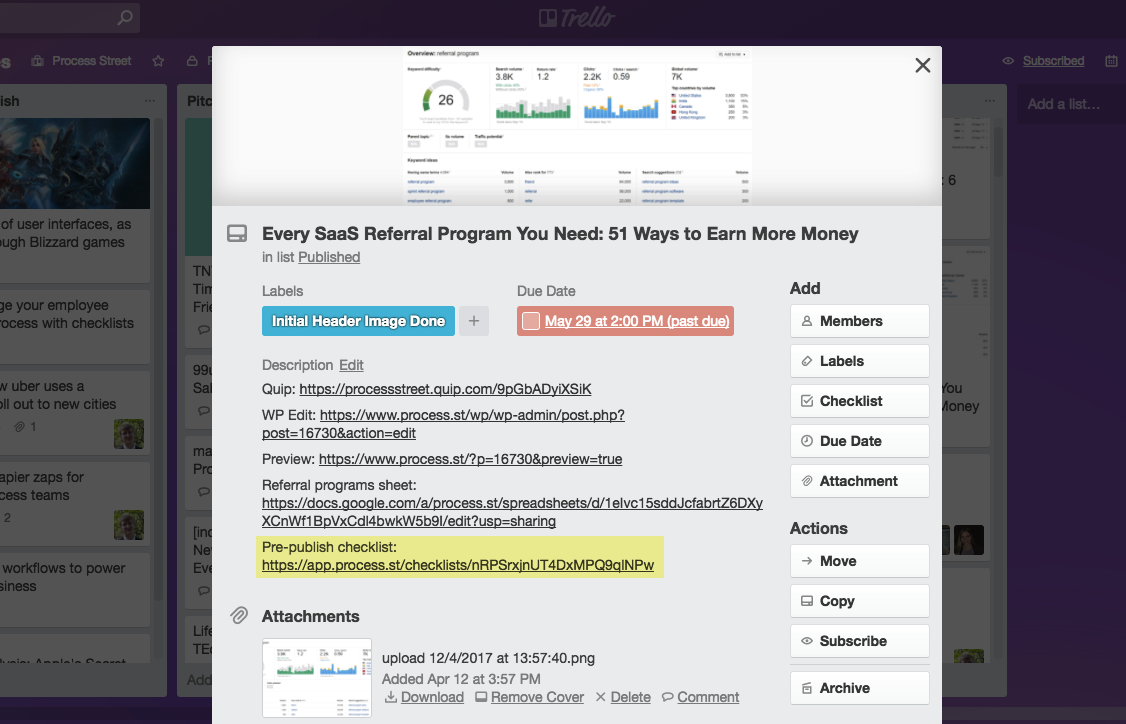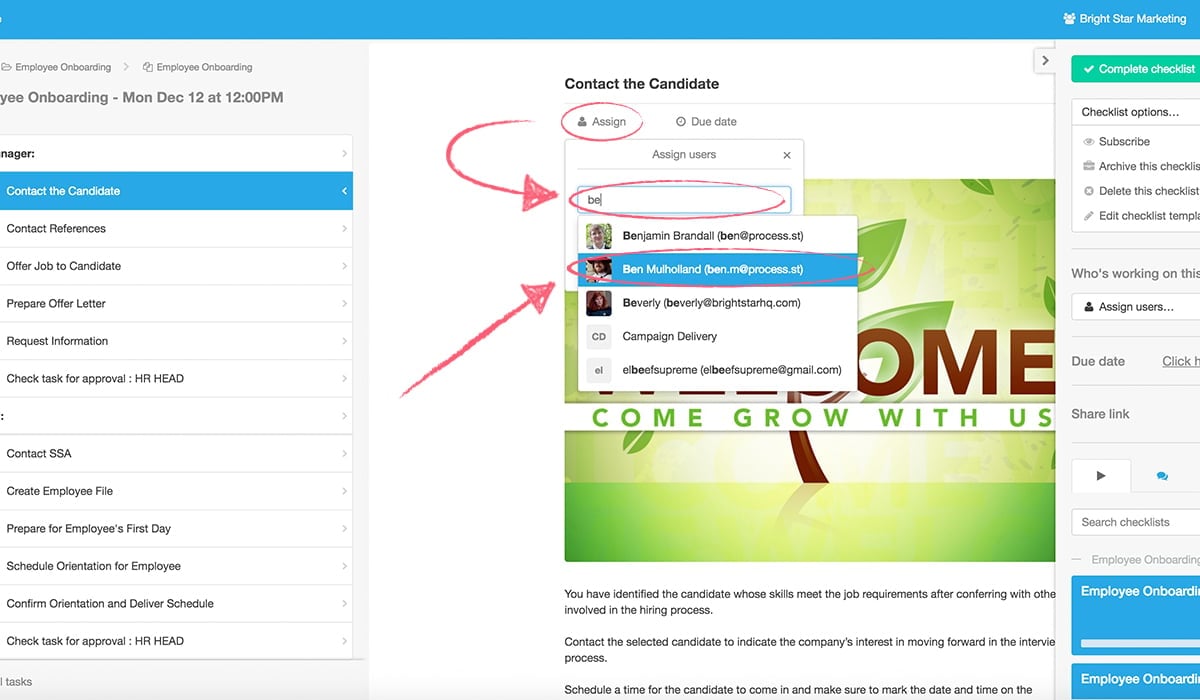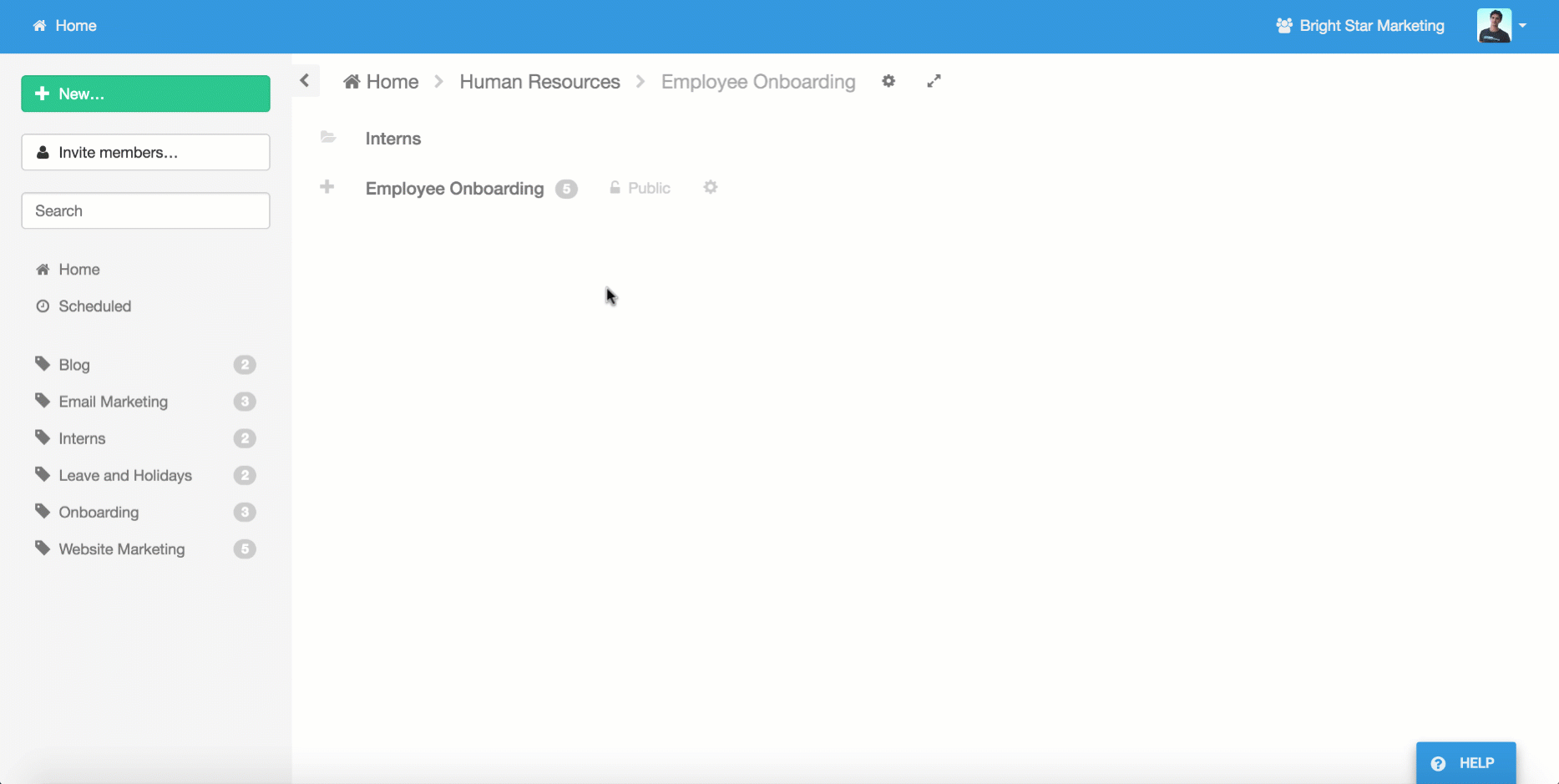 Processes aren’t just a set of documents and rules that help your business run efficiently and reduce human error…
Processes aren’t just a set of documents and rules that help your business run efficiently and reduce human error…
They’re also something that needs to be part of your company culture. Process adherence is the culture side of systemization, and that makes it one of those hard to grasp concepts without many solid rules.
The culture of processes — instead of the act of writing and optimizing them — is something we’ve been meaning to cover for a while because we know it’s a big problem for our users.
Incidentally, we got an insightful comment on our article about creating an operations manual from MamaRed Knight. She outlined an age-old problem with process adherence:
“[Process adherence] is something I’ve been dealing with since I started formally creating documentation in ’83. It really must start at the top level where they don’t answer questions, they ask if it is “in the manual” and it ripples down.
It does take time because, frankly, a very teensy tiny percentage of people want to look something up… 98% want to ask someone and be done with it.”
In this quote, she highlights two main issues:
- Employees don’t want to look up processes
- Procedures are passed on informally by hearsay
In this post, I’m going to explain why processes fail because of human nature, and then unpack each reason with an explanation of how you can improve process adherence in each area.
Why no one adheres to processes
It’s a common misconception that processes are counter-productive. The real productivity killer is when a team doesn’t know what they’re doing, or who’s responsible for it. In cases like this, teams will develop their own informal versions of processes in their heads in a phenomenon known as the normalization of deviance.

In an ideal world, every process would be formalized and optimized, and everyone would follow it to the letter. In reality, that’s a rare thing. It’s the companies that realize how important it is that succeed.
In this post, I’ll go into the precise reasons why process adherence can be a tricky problem to solve. These include:
- Processes are hard to find or take too much time to use
- Processes are out of date
- Processes are dull or difficult to read
- No one has the responsibility of mentoring the team and policing their process adherence
- Errors are treated as one-offs, not real problems with the documented processes
And so, in this post, I’m going to share knowledge and resources from process experts to help you nail down your business systems and start seeing real results out of that dusty old binder full processes no one looks at.
Make processes easily available (so there are no excuses)
Where do you store your process documents? In the best case scenario, you use a dedicated cloud-based solution like Process Street. We know that it’s common for businesses to store their processes on Google Drive, locally inside Word documents, or even using a library of binders. MamaRed Knight shared her experiences with us:
“When I was running a tech support team, the rule was you always asked if they had the latest copy of the manual (my first position doing this was in the days of printed stuff). If they didn’t have it, we made sure the latest copy was sent.”
To make it even easier, you can bake processes into whatever system your employees spend their time in. We use a Slack post inside our content creation group full of URLs to the processes we might need, just because it’s easiest to work inside the app you’re used to using, instead of changing apps all the time.
Make processes easy to read, or they’ll be ditched
If processes aren’t easy to actually use, they’re going to be hard to adhere to. As I pointed out in a previous article on using emoji in processes, Trustologie CEO Marie-Claire Ross says that 95% of processes are difficult to read. One (slightly off-the-wall) solution I suggested in that article was to use a creative range of emoji as ways to make processes scannable and more visually appealing. Although, that solution isn’t ever so useful if your processes are incomprehensible in the first place.

As referenced in the useful comment we got from MamaRed Knight, processes are often badly written for a few reasons:
“Often [processes are] written in a vacuum by someone who either:
- doesn’t think any instructions are needed because the “thing” is so easy a monkey could do it
- knows the “thing” so well they leave out a bunch of information or include everything but the kitchen sink
- has no background in writing about a “thing” in terms that translate technical-ese to everyday-ese”
Thankfully, there are a lot of resources you can use to write clear processes and a few simple rules:
- Use an imperative at the start of each of instruction (turn your computer on, send the report to the marketing manager).
- Break complex tasks down into bullet points to avoid blocks of text.
- Use graphics, flow charts, videos and photos to make the instructions as clear as possible. For an example, see our XYZ template.
- Cut out as many words as possible (but don’t skimp on vital details)
- Include all the necessary information: facts, but no opinion or subjective language (“
if you like…“)
Above are just a few key pointers that will make your processes easier to use.
For more tips on writing clear processes, see these resources:
Take time to explain processes to employees (on a 1-on-1 basis)
As a manager, it’s your responsibility to make sure that your team is able to do their job properly. That means going through the process personally with an employee and either figuring out where it’s breaking down or making sure they are completely familiar with it. Don’t spoonfeed information off-hand; direct your team to the processes, and be there if they need extra explanation. Also, consider that if a process needs repeatedly explaining, it might be an issue with the process itself.
MamaRed Knight explains her method and results for explaining processes directly:
“If they had the latest [process manual], we would direct them to the right page, talk them through the steps, and made sure they understood. Within less than 60 days, our support calls dropped by about 30%. In many cases, the caller would say “oh, I got it” and hang up. I had to train the tech support team first and couldn’t have done it if the manager hadn’t been in the loop and supportive, though.”
One interesting thing to note is how important it is that a manager stays in the loop with how their team is working and is available to offer help with processes. The more people that learn the process properly, the less you’ll find misinformation seeping into the commonly accepted ways to get work done.
Appoint a process champion
A process champion (or any other title you want to use) is someone responsible for checking process adherence, managing the business processes, and checking in with teams using processes to make sure they’re not running into any issues. In a small company, this could be just one duty of each team leader. Bigger organizations have been known to appoint a staff member with the sole role of enforcing processes — Promapp call this their Process Bulldog.
“An effective Process Bulldog shifts the temporary peaks and troughs cycle of problem solving effort away from emergency response, making it an expected, ongoing activity. The WIIFM needs to be “this is part of my job.” As in, “I am the process owner for the customer complaints process. I am accountable for its effective operation, because it’s critical to our success and its part of my role.””
Major cultural changes in organizations work better when there’s an individual made accountable instead of just an unenforced change in policy.
Treat all human error failures as process failures
We’re massive fans of The Checklist Manifesto at Process Street. If you haven’t read it, you can check out a full summary here. In short, the book is a case study of a doctor implementing a checklist in the operating theater to reduce human error. He knew the fault wasn’t that all surgeons are incompetent, so he sought to make sure that the proper processes were in place and that they were being followed. The results were quite startling: 78% of staff using the observed the checklist preventing a mistake in the operating theater.

At Process Street, when a blog post gets submitted for review with broken links, it’s treated as one of two things:
- A failure to document the process properly
- A failure to adhere to the process properly
The key way we avoid these kinds of errors happening repeatedly is to check every count of human error against the process that was supposed to be in place to avoid it. For example, we’d ask:
- Does the process not have a step that asks the participant to check broken links?
- Is that step’s method outdated? (e.g. does it ask the participant to use a deprecated Chrome extension that doesn’t work properly anymore?)
- Is the process simply not being followed closely / at all?
The last question is easy to check. Our BPM software, Process Street, logs process activity and gives managers an easy way to see who is doing what.
Constantly keep processes up to date
An out of date process can make the difference between a useful document that skyrockets your business efficiency and a misleading source of pesky mistakes. You could choose to tackle process updates by regularly auditing your team’s processes, but it’s better to make updating processes a task for the process participant every time the way you do the work changes (e.g. when you change the software you use, or when team structure changes).
Process Street makes it easy to keep processes up to date because everything is hosted online. Making changes to the master document affects the process everyone will see, so there’s no disconnect between those who have the old and new copies of the process.

Also, updating a process template lets you make automatically make updates to every active process, too. That means you don’t need to worry about work-in-progress tasks getting executed incorrectly.
How we solve process adherence in our teams at Process Street
Since we develop process software, it won’t come as a surprise that we live and breath processes. Thankfully, Process Street has its own mechanisms built in to help managers ensure their team is following procedure.
Here are how we solve it…
When you submit work for review, you also need to submit your completed process
As a manager, you need a way to check directly if a task has been completed to the specifications laid out in its process. It’s especially important if a process breaks down; if the process really has been followed to the letter, then there must be something wrong with the process.
Here’s how we do it at Process Street:

I’ll explain. We manage all of our pending blog articles and ideas inside a Trello board. To centralize information (which is an important part of building a scalable business), we put all relevant links inside the respective blog post’s Trello card. That includes a link to the pre-publish checklist, which is a process we use to make sure our blog posts are keyword optimized, error-free, and submitted for approval.
Other than ensuring consistency for our blog, it also ensures process compliance accountability for the writers and editors. If the link to the process isn’t there, it’s assumed it hasn’t been completed and can’t be submitted.
Automated notifications for due tasks and checklists
Notifications make it easy to keep up to date with the processes that matter. We know that many businesses use email to stay updated, so Process Street is able to send emails to users in a few different cases:
- When you are added to a checklist or task
- When a checklist or task you are added to is due for completion
- When another user @mentions you in a comment
This helps you keep track of your processes, and can also be routed through Zapier to send these notifications to other apps like Slack. Alternatively, we also integrate with Slack to feed Process Street notifications wherever they need to go.

Add members to tasks to improve accountability
The same way that a task never gets done if it doesn’t have a deadline, a process won’t be completed if it doesn’t explicitly state who is responsible for it. With Process Street, you can assign members (individuals and groups) to tasks and templates, so everyone will know who is accountable for execution.

By clicking ‘Share template’, you can add email addresses of your team to the template. Alternatively, you can assign specific tasks from inside templates.

See all active processes in an easy-to-use overview
If we need to know the status of multiple process checklists at once, we use our template overview feature inside Process Street:

This shows us each instance of a process run, along with the assignees, task status, due date, and more. Instead of manually checking in on the status of tasks, we just check the template overview and get detailed, filterable information instantly.
The culture of processes
Writing, deploying, and even optimizing processes is likely to be an easier task than actually getting people to use them. This is especially true in larger organizations where all change needs buy-in from leadership.
However, I hope this article has helped you get on the right track towards building a process-driven business that cuts human error from its operations.







Benjamin Brandall
Benjamin Brandall is a content marketer at Process Street.